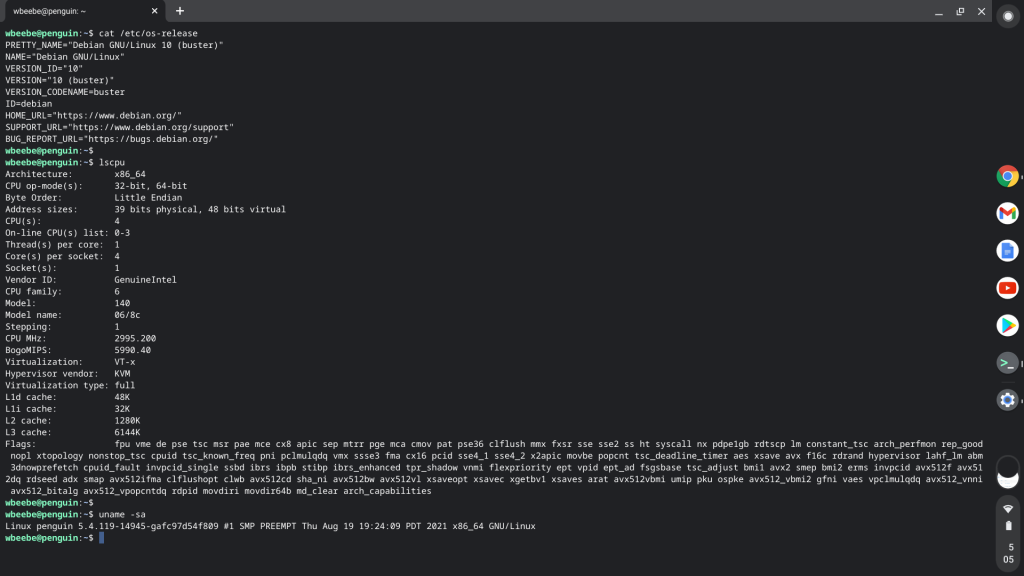Yesterday I finally upgraded my MacBook Pro (mid-2019, i9, 64GiB memory, 4TB SSD) to macOS 12.0.1 Monterey. It’s not like I appeared to have a choice. In attempting to upgrade to macOS 11.6.1 I triggered the further update process. I certainly didn’t want to, not after reading that Monterey 12.0 bricked a number of MacBook Pros, some Intel and some Apple Silicon. I’d wanted to wait until Monterey 12.1, but such was not to be. So far the only problem is that my fix for allowing VirtualBox virtual machines to run has been reset, so I’m going to have to go through that process as documented for Big Sur ( /2021/10/30/running-oracle-virtualbox-on-macos-11-6-big-sur/ ) once again.
I then checked the four browsers I have on this machine by running EFF’s Cover Your Tracks privacy test ( https://coveryourtracks.eff.org/ ) just to see what happened. The browsers I tested (listing extensions where used) are:
- Chrome Version 95.0.4638.69 (Official Build) (x86_64)
- Using Adblock Plus and Privacy Badger
- Vivaldi 4.3.2439.65 (Stable channel) (x86_64)
- Using Javascript Restrictor
- Firefox 94.0.1 (64-bit)
- Using Privacy Badger
- Safari Version 15.1 (17612.2.9.1.20)
They’ll be presented in that order below.
Everybody loves to hate on Google, especially Google Chrome. I’ve read more than one article on the web where the author hysterically exhorts their readers to delete Chrome before it sucks the end user’s very soul into the black depths of Alphabet’s digital hell. I suppose if you’re that paranoid then by all means drop Chrome. Except EFF’s test gave Chrome a very good score with regards to tracking, perhaps the highest a browser can get. I’ll keep Chrome around until there’s a real need to move on. And an interesting note: when I run the same test on my Chromebook running the latest Chrome OS, the score is the same as here.
Vivaldi was the second browser I tested. The first time I ran the test I was shocked when it came back as NOT blocking tracking ads and invisible trackers. Paradoxically fingerprinting was randomized. The shock came because months back I’d run the same test and blocking was in place. This meant that something had changed in Vivaldi, perhaps due to something I’d inadvertantly done. So I went exploring and found the following:
You’re looking at Vivaldi’s Preferences, Privacy section. The Blocking Level is towards the middle of the page. When I first opened it the level was set to No Blocking. I set it to Block Trackers and Ads and re-ran the test. The test came back with satisfactory blocking (yes in both columns as seen above). I don’t know how that changed, because I’ve never touched that except for the first time I set it to what you see now. The only way I know it could have changed is through an update. Lesson learned is to go back and check this again on every update in the future, which is somewhat sad as I’ve never had a browser flip a setting on an update.
The third browser I tested was Firefox. Note that the fingerprinting is unique, unlike Chrome and Vivaldi, who have random fingerprinting. Also note that the tabs across the top are the button-like tabs, which I don’t particularly care for. I’ve reached a point where I tend not to use Firefox, even on Linux.
Finally we come to Safari. It has the worst score of the four browsers I tested, even though Apple makes loud pledges about privacy and security. Safari on macOS (and probably everywhere else it runs) gives one pause to wonder if Apple is all talk in this area. I think they are.
I also would like to point out that the tabs are back to normal. I ran with Safari’s button tabs right before this update, when the change was foisted on my Mac in a Safari update. It was absolutely hideous. I’ve done everything I can to avoid using Safari, even setting Vivaldi as my default web browser. Between these results, the button-vs-tabs fiasco, and other issues, I now have no trust in Safari, nor the Apple developers who work on Safari, to produce a quality product.
So there you have it. A very brief look at four of the latest browsers on the current macOS. And before you ask, I will never install Microsoft’s Edge on my Mac.








You must be logged in to post a comment.